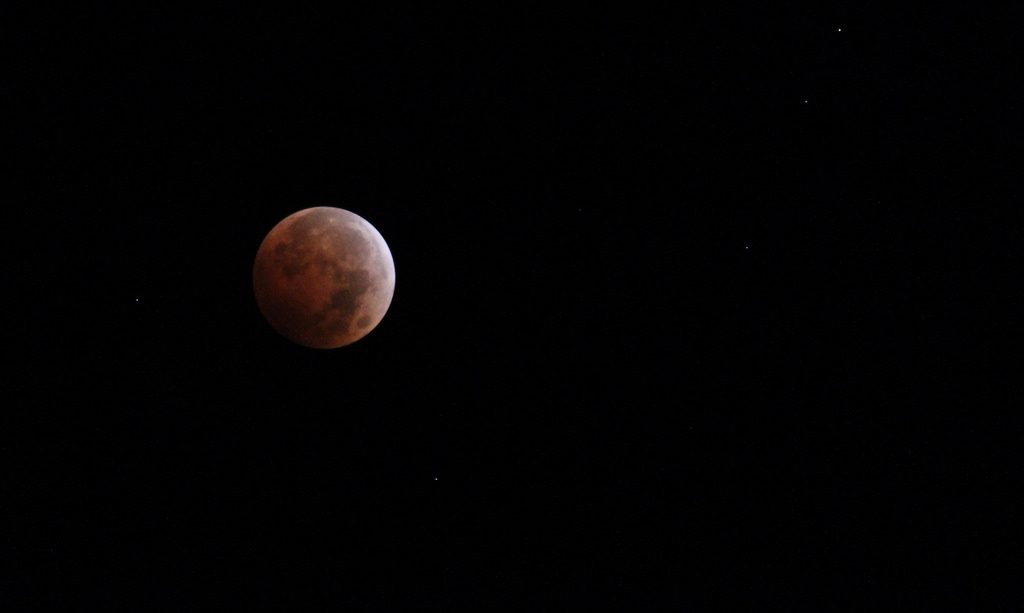The Moon is Doing Some Crazy Things Tomorrow Night
Early in the morning on Jan 31, the Earth will be given a rare treat: a supermoon, a blue moon and a full moon, all on the same night of a total lunar eclipse.
Each of these phenomena are not rare in and of themselves, but together they promise an extraordinarily unusual and beautiful night sky.
The #SuperBlueBloodMoon is best visible from 7:51-9:07am (ET), 5:51-7:07am (MT) and 4:51-6:07am (PT).
Due to the moon’s orbit around the Earth (and each of their respective relationships to the sun), the moon lies at least partially in shadow the majority of the year. When the moon is in a position where observers on Earth do not perceive a shadow, the side of the moon facing Earth is completely visible and thus, full.
A full moon lights the sky every 29.5 days, or about once a month. When there is more than one full moon in a month, that second moon is referred to as a blue moon (although this is just one of two distinct definitions of what constitutes a “blue moon”).
The red part of the moon is the sunrise and sunset of the Earth falling on the moon. This Blue Moon Blood Moon is the first visible from the United States since 1866.
A supermoon occurs when a full moon coincides with the moon’s closest point to Earth in its orbit. Though not inherently noticeable, a supermoon can appear slightly larger in the sky than its ordinary counterpart.
A lunar eclipse results when the moon moves into the Earth’s shadow— a bi-annual occurrence. When the moon is full during an eclipse, there is a total lunar eclipse. Due to Rayleigh Scattering, the moon does not disappear into blackness during a total eclipse but instead takes on a reddish hue sometimes called a blood moon.
It has been 150 years since the last time these phenomena have occurred simultaneously.
Click here to determine when best to see the moon in your area.
On Jan. 31, 3 lunar events will come together in an unusual overlap that’s being called a super blue blood moon. See how this celestial rarity will help @NASAMoon scientists observe what happens when the lunar surface cools quickly during a lunar eclipse: https://t.co/5keRakwhUk pic.twitter.com/x9jhb5foVY
— NASA (@NASA) January 28, 2018
Before – During – And the moon at 9:29, its bloodiest.
And tonight, blood was shed in the most beautiful way. 01312018
(CRANK UP DEM BRIGHTNESS AND ZOOM. THERE ARE STARS IN THESE PHOTOS) #SuperBlueBloodMoon pic.twitter.com/mE0xkTmZp6
— rachel. (@rcvenantx) January 31, 2018
3 moon in a single night. #SuperBlueBloodMoon pic.twitter.com/PWHJjJryJe
— Abaidullah Aslam (@Abaidulah_Aslam) January 31, 2018
You can watch Nasa’s live stream of the event, seen from multiple telescopes, on their website.




